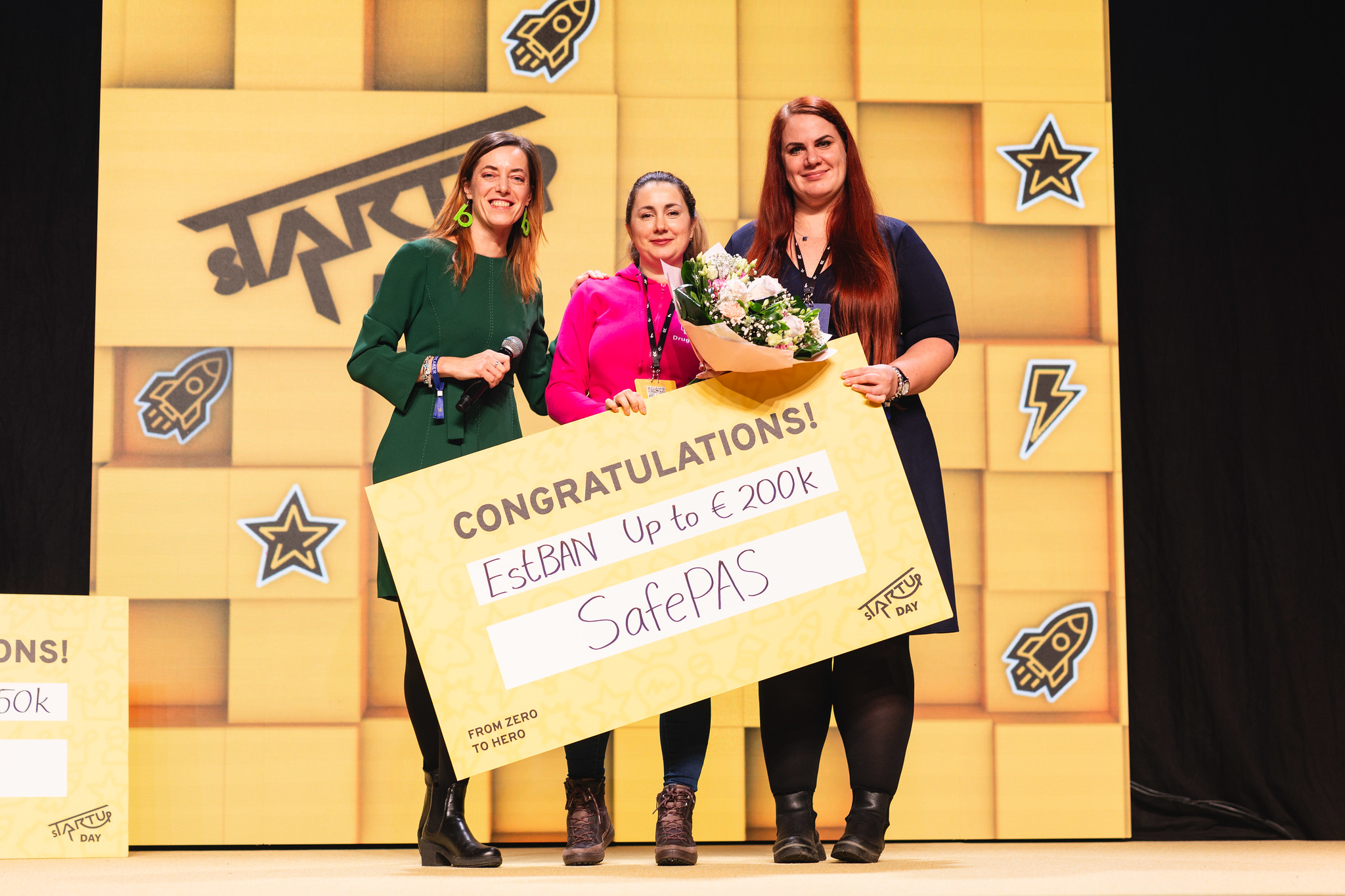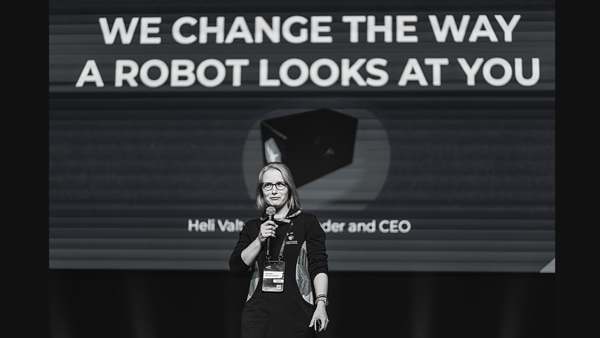
sTARTUp Pitching 2022 winner LightCode Photonics changes the way robots see us
LightCode Photonics picked up a €200k EstBAN-led syndicate investment from the sTARTUp Pitching 2022 competition. The University of Tartu spin-off, founded in 2020 by four physicists, is on a mission to change how robots see the world. Read from our blog how they are going to do that.
Have you ever looked at a holiday photo snapped with your smartphone and wondered how far the tourist landmark in the background is from your friend at the center of the image? Chances are you have not done so; however, this is exactly the kind of question LightCode Photonics seeks to answer.
The team is interested in such questions because they are developing a LiDAR camera based on proprietary technology that would create accurate 3D images. Such devices are needed by companies in the logistics sector that want to take service robots to the next level.
Whether we’re talking about last-mile transportation or warehouses, the robots deployed there need to understand their surroundings – how they are positioned, what objects are surrounding them and how fast these objects are moving. Only then can the robots operate in fleets and safely perform tedious, repetitive and dangerous tasks instead of humans.
So how can LightCode Photonics help robots see better?
Currently, robots struggle to estimate the distance from 2D images and make calculations based on them. The solution? Equipping robots with 3D vision with the help of LiDAR technology (a method for determining distances by targeting an object with a laser and measuring the time for the reflected light to return to the receiver). The downside? The existing LiDAR cameras are very expensive.
LightCode Photonics is building a compact and affordable LiDAR camera based on a completely novel approach to acquiring 3D images. "Figuratively speaking, we attach clocks to pixels that help measure the distances of objects. A limited number, let’s say about 100 such clocks fit on a chip. Thus, in order to obtain a higher resolution, we take advantage of the pixel substructure and dynamically increase the resolution of the camera with the new principle of operation and help of algorithms,” explains Heli Valtna, CEO and Co-Founder of LightCode Photonics.
“As a result, we can have a 12-pixel image capture a 1500-pixel image of the scene. This means a 15 USD sensor will behave as one costing 1000 USD. So this will solve a big challenge in front of robots.”
According to Heli Valtna, 3D images are one component of making machines understand their surroundings better and thus make smarter decisions. On the other hand, she emphasizes that smarter machines do not take away jobs or fun associated with hobbies. "If someone enjoys mowing the lawn in his backyard with a hand lawn mower on Sunday morning, they can still do it. And there will always be a need for people to train and operate robots."
An excellent example of science-to-business
LightCode Photonics is an excellent example of how a research project grew into a promising B2B start-up. The spin-off company of the University of Tartu was founded in 2020 by four renowned physicists. The team first joined S2B Launchpad incubator at Tartu Science Park (a co-organizer of the sTARTUp Day festival), then further polished their idea at the European Space Agency Business Incubation Centre (ESA BIC) Estonia incubator. Earlier this year, they snapped up a victory at the prominent MIT Enterprise Forum CEE acceleration program.
Since the start, the team has made it a tradition to attend the sTARTUp Day festival. "Each year, sTARTUp Day offers the opportunity to meet new partners, customers and investors and have inspiring conversations. For example, this time, a conversation with an investor, revealed us an even better way of explaining our technology," says Heli Valtna.
We wish the team of LightCode Photonics continued success on their journey and will surely catch up with them before the next sTARTUp Day happening already on 15-17 March 2023! Applications to sTARTUp Pitching 2023 open in October.

The sTARTUp Day Pitching TOP30 is here!

